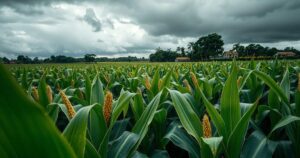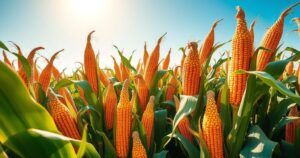Climate Change Intensifies Colorado Drought Effects Despite Precipitation

A new study from UCLA and NOAA reveals that heightened temperatures due to climate change are exacerbating drought in Colorado and the Western U.S., even during periods of normal precipitation. From 2020 to 2022, evaporation was responsible for a significant portion of drought severity, highlighting an alarming trend that necessitates a reassessment of drought definitions.
A recent study conducted by scientists from UCLA and NOAA has revealed that climate change-induced high temperatures are exacerbating drought conditions in Colorado and the broader Western region of the United States, even during periods of sufficient rainfall and snowfall. This research highlights a shift in the dynamics of drought, showing that elevated evaporation rates due to high temperatures can significantly impair soil moisture, leading to drought-like conditions despite normal precipitation levels. Initially, from 2020 to 2022, the study identified that the ongoing drought was primarily a result of warm air extracting moisture from the land through evaporation rather than a mere absence of rain. As average global temperatures continue to rise, the scientists warn that the West will increasingly face drought challenges, impeding agricultural growth and water availability. Joel Lisonbee, a coauthor of the study and regional drought information coordinator at NOAA, stated, “It is becoming the reality of the world that we’re living in.” The study suggests that as the atmosphere warms, it becomes more capable of holding evaporated moisture, leading to increased drought risks despite what may appear to be normal precipitation levels. The researchers reported a startling trend, wherein from 2000 to 2022, the role of evaporation became even more pronounced in drought severity assessments. During this timeframe, the contribution of evaporation to the severity of drought was calculated at 61%, whereas reduced precipitation accounted for only 39%. This stark contrast to historically observed trends reinforces the need for updated drought definitions that incorporate modern climatic realities. The findings further indicate that between 1948 and 1999, only 26% of historically vulnerable Western land was susceptible to evaporation-induced drought. However, since 2000, this figure has risen to 66%. These results underscore the urgency of addressing greenhouse gas emissions and the relentless warming of the atmosphere, as higher temperatures are projected to continue intensifying drought conditions in the West.
The increasing frequency and severity of droughts in the Western United States can be attributed to climate change. The study emphasizes the relationship between high temperatures and water evaporation, illustrating how warmer air not only increases the evaporative demand on land but also affects water availability for agriculture and ecosystems. Since traditional models of measuring droughts may not be adequate under these new conditions, redefining drought metrics to reflect current climatic factors is essential for future assessments and response strategies.
In conclusion, the UCLA and NOAA study sheds light on the evolving nature of drought conditions in the West due to rising global temperatures. With evaporation emerging as a critical factor in drought severity, traditional definitions of drought must be reassessed. The imperative to curb greenhouse gas emissions remains paramount to mitigate these severe climatic impacts and safeguard water resources for future generations.
Original Source: coloradosun.com






